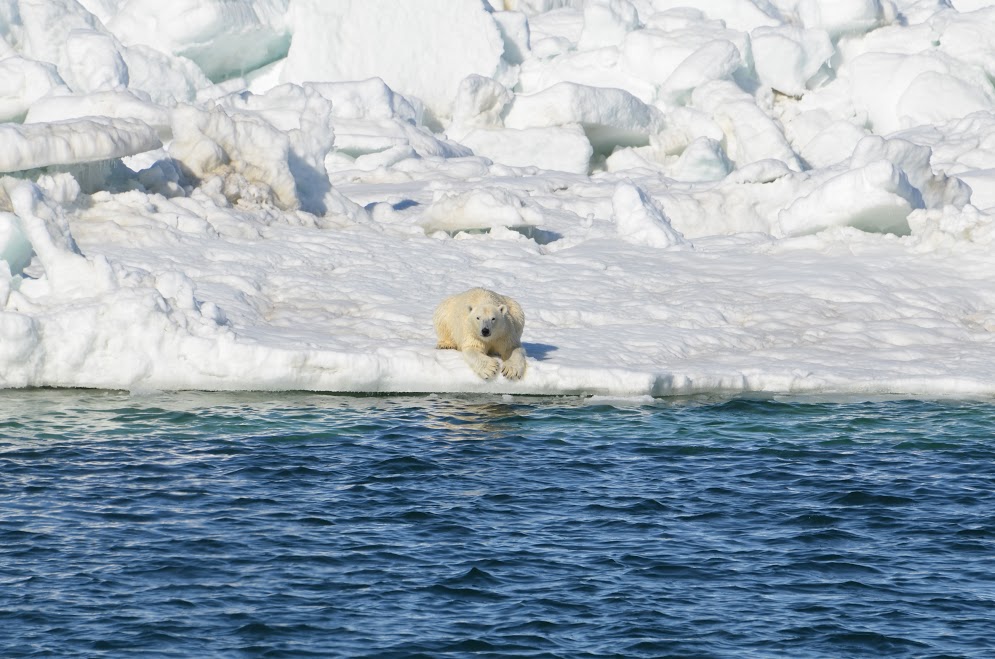Hunting on Land Can't Help a Hungry Polar Bear

Even though some polar bears are hunting on land more often in areas hit by climate change, a diet of bird eggs and berries can't sustain these huge animals, a new study finds.
Only a handful of polar bears have been spotted snacking on land-based foods to supplement their traditional, blubber-rich diet of seals and marine mammals. But researchers have wondered whether the high-protein, high-carbohydrate foods polar bears eat on land — such as caribou and berries — could help these symbols of the perils of climate change survive, as sea-ice loss makes seals harder to snatch.
It turns out the calorie trade-off isn't worth it, according to the study, a review of previous research on bear diets published today (April 1) in the journal Frontiers in Ecology and the Environment. The biggest bears on the planet, polar bears spend so much energy searching for berries or chasing down caribou that they reap little caloric reward from these meals. [In Images: Polar Bears' Shifting Diet]
"A really large bear has high energetic costs when they get up to forage, and these [terrestrial] resources are typically lower in calories or widely dispersed," said Karyn Rode, lead study author and a U.S. Geological Survey research wildlife biologist in Anchorage, Alaska.
Polar bears get all the calories, vitamins and minerals they need from their traditional diet, which is the fattiest of any animal on Earth. But their nearest geographic cousin, the Arctic grizzly, struggles to find enough food.
Rode points out that Arctic grizzlies are the smallest of all grizzlies. These aren't the giant brown bears that gorge at Southeast Alaska salmon streams. Arctic grizzlies are just a quarter the size of polar bears, Rode said. "The first time I saw an Arctic grizzly I was laughing, it was so small," she told Live Science.
Polar bears typically spend 85 percent of their time on land, resting and fasting. A grizzly, on the other hand, forages all the time, Rode said.
Sign up for the Live Science daily newsletter now
Get the world’s most fascinating discoveries delivered straight to your inbox.
Finally, even if a few polar bears do make bird eggs and other terrestrial foods an important part of their diet, the bears may gobble so many eggs that they might decimate the Arctic seabird population. "Terrestrial foods can't offer polar bears what they need at a population level," Rode said.
Global warming has reduced the amount of Arctic sea ice near shore, especially in the late spring when polar bears hunt for seal pups before moving onto land for the summer. Polar bears mainly hunt for seals on the sea ice. The shrinking sea ice is sending the bears to shore earlier in the season in some areas of the Arctic, such as Hudson Bay, Canada, and their arrival overlaps with hunting opportunities for geese, eggs and caribou.
However, polar bear populations are stable in other Arctic areas, such as the Chukchi Sea between Alaska and Russia, Rode said. And the availability of marine prey could change as new species move north to claim warming ocean waters.
"If terrestrial feeding can't help, there are other things we need to be thinking about," Rode said.
Follow Becky Oskin @beckyoskin. Follow Live Science @livescience, Facebook & Google+. Originally published on Live Science.










